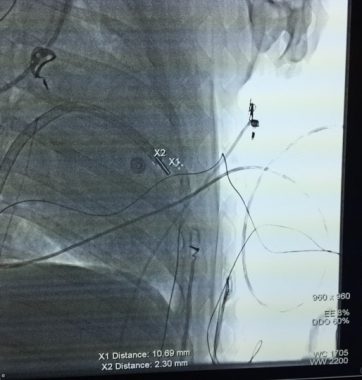
The Imaging Ablation Catheter (IAC) is a novel project in advanced catheter design. Fibrotic tissues with the atria of the heart can interfere with healthy cardiac electrical conduction pathways. This interference can lead to irregular and off-beat heart rhythms known as fibrillation. The current medical state of the art is to remove or isolate those regions of the heart that generate arrhythmetic signals. Typically, this involves using ablative methods such as radio frequency or cryogenic ablations. Working on the premise that it is possible to concurrently image, electronically map, and ablate tissue, the IAC seeks to improve the treatment outcomes of ablative cardiac surgery using a single catheter.
The IAC catheter combines cutting edge fiber-optics based confocal microscopy with the ability to map the electrical conduction signals all at the site of ablation – all in real-time. Our studies have shown the capability to look past the epithelial layer of the heart into the myocardium. This approach allows us to identify regions of fibrotic or irregular tissue as targets for ablation both visually and electrically. We are then able to concurrently ablate the tissue while continuing to gather video imaging and conduction signal data in situ.
In combination with available advanced cardiac mapping and navigation software systems we are able to build detailed mosaics of the heart structure that combine local electrical reading with cellular level visual data from within the heart. Used in conjunction with techniques such as delayed enhancement MRI imaging we are able to create a clearer understanding of the pathophysiology of cardiac arrhythmias.
Currently, this project set is exploring ways to enhance the depth, quality, and accuracy of the combined sensing modalities.




